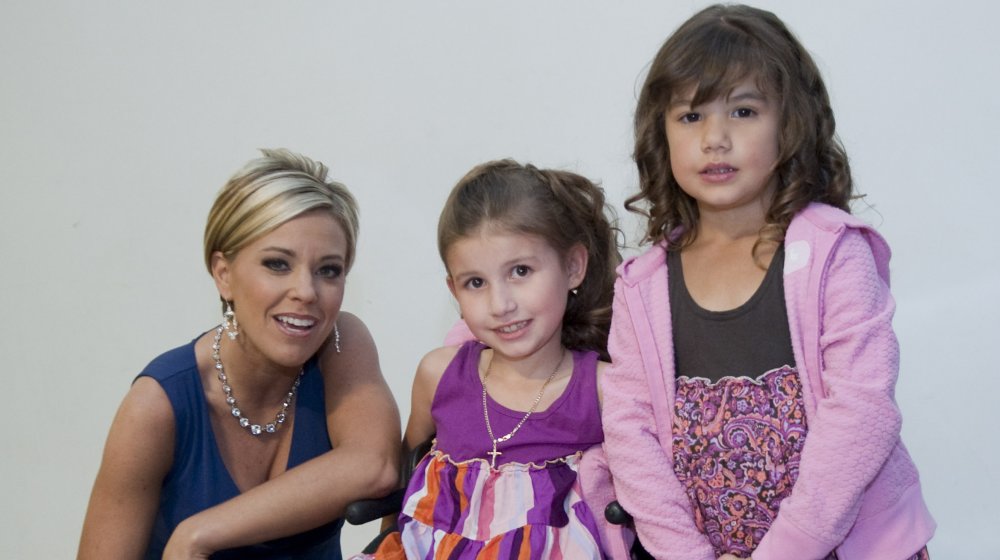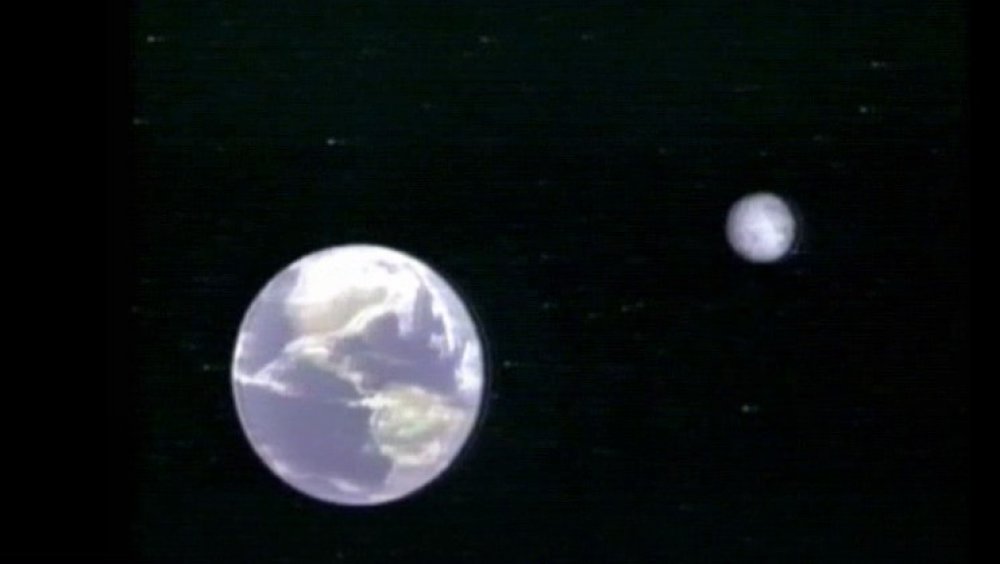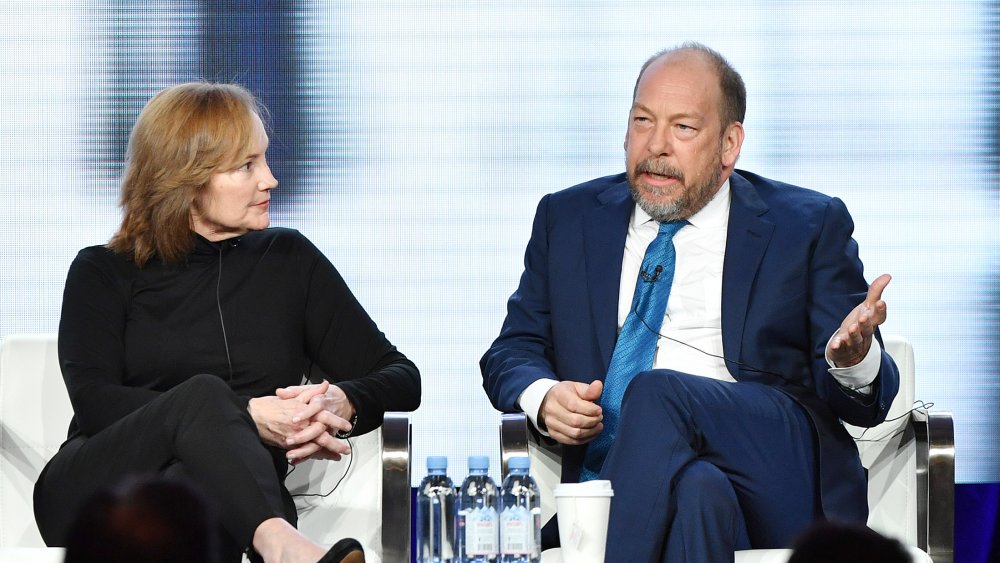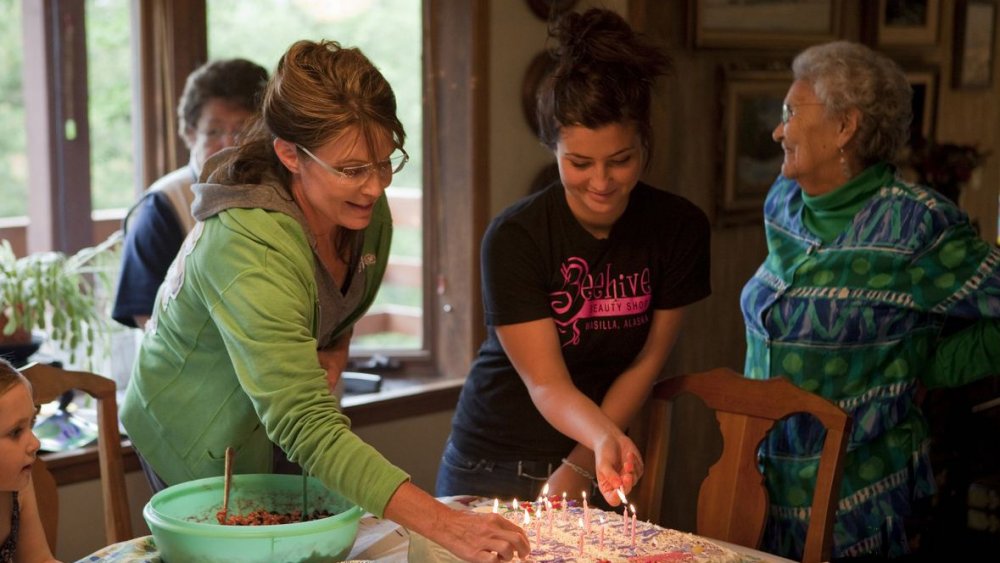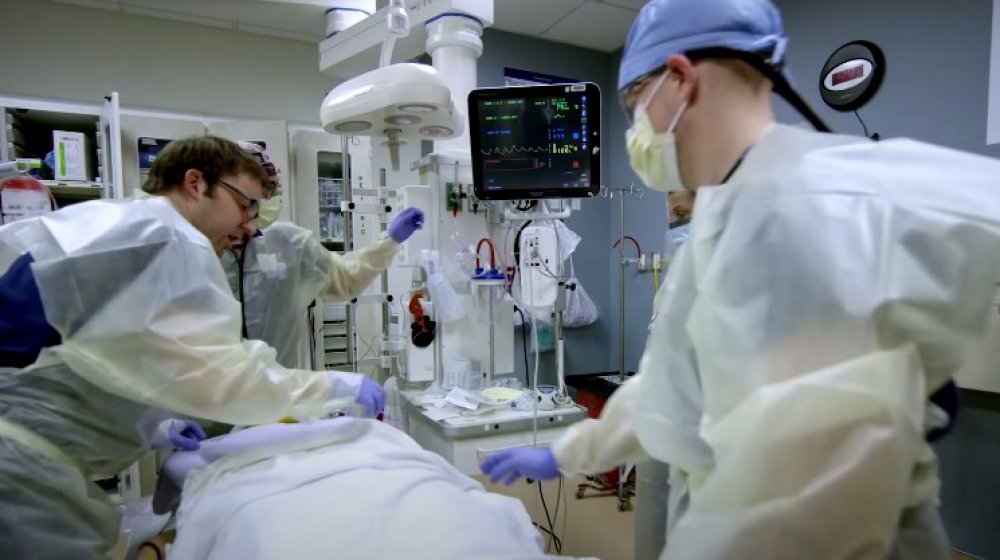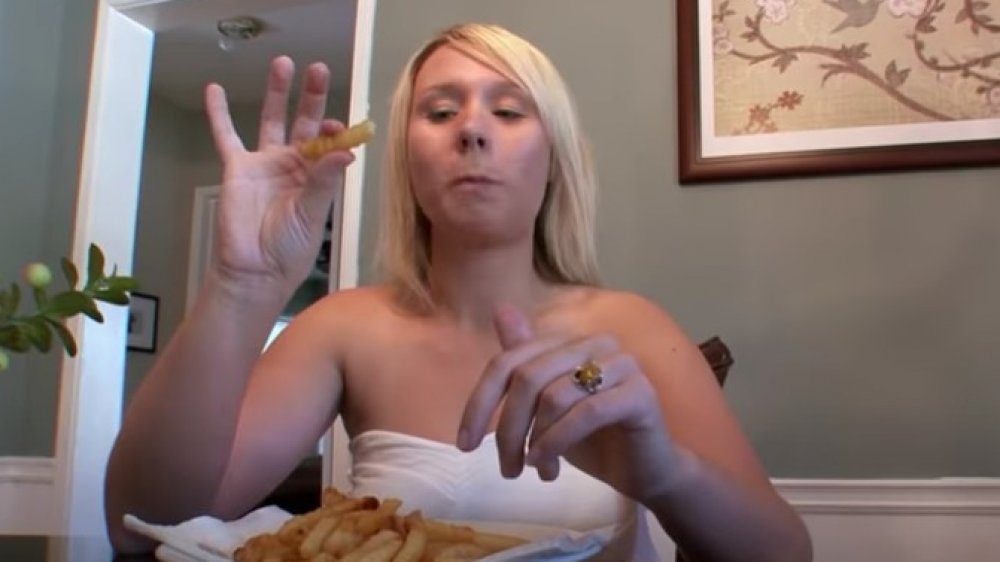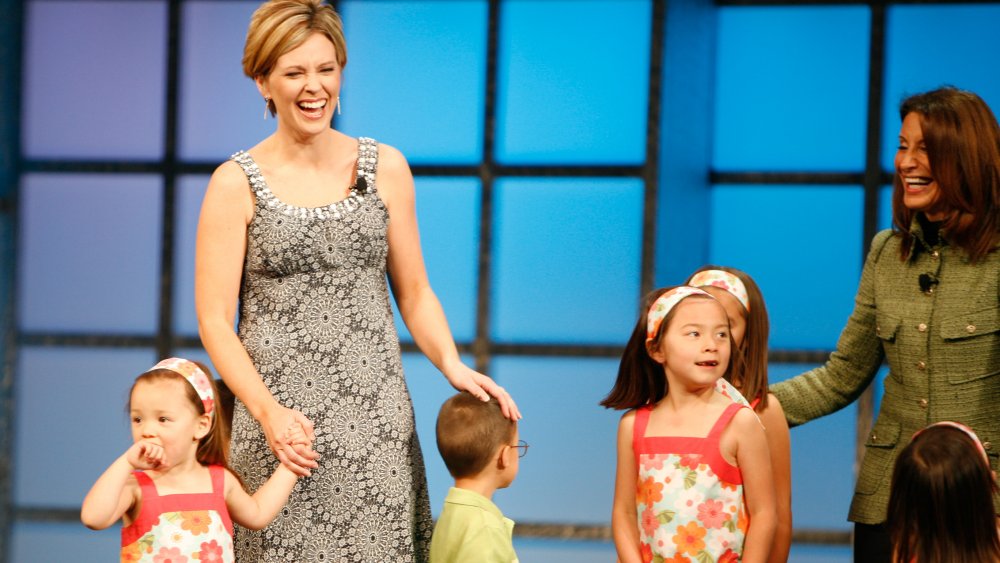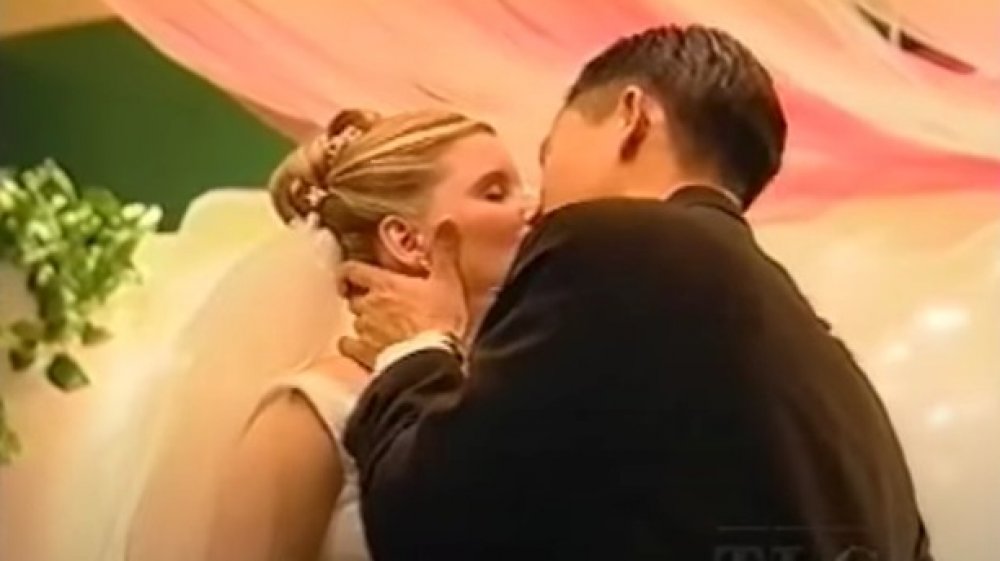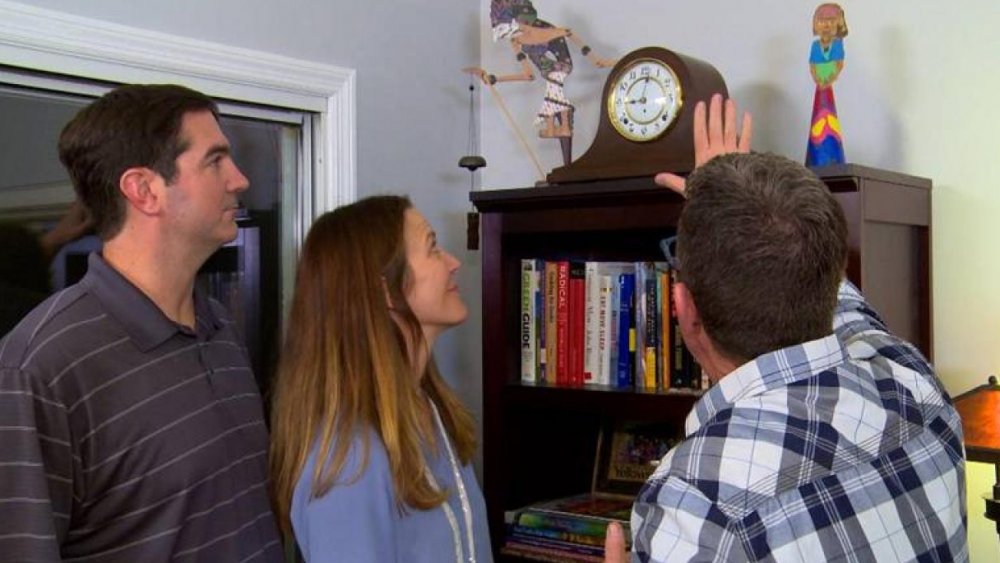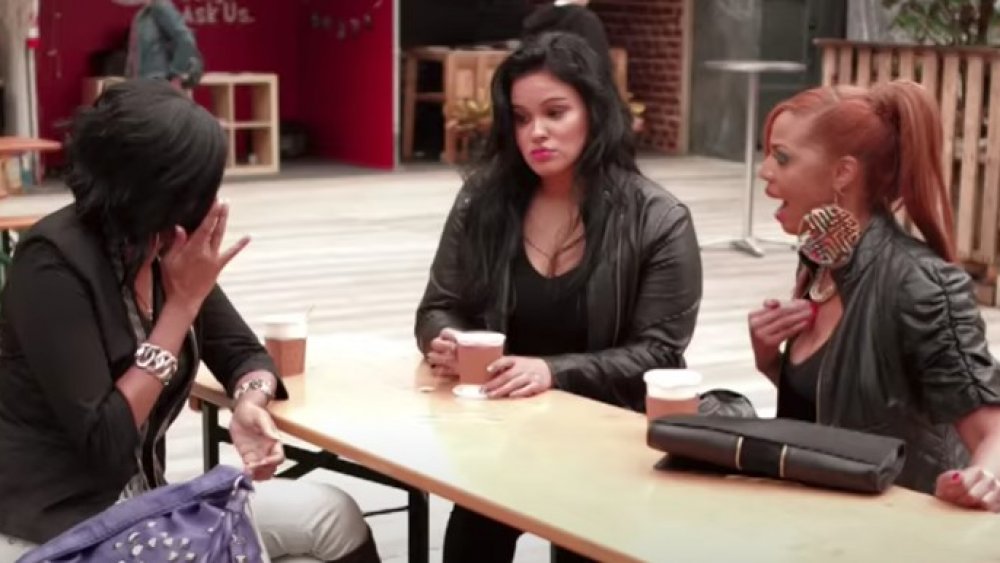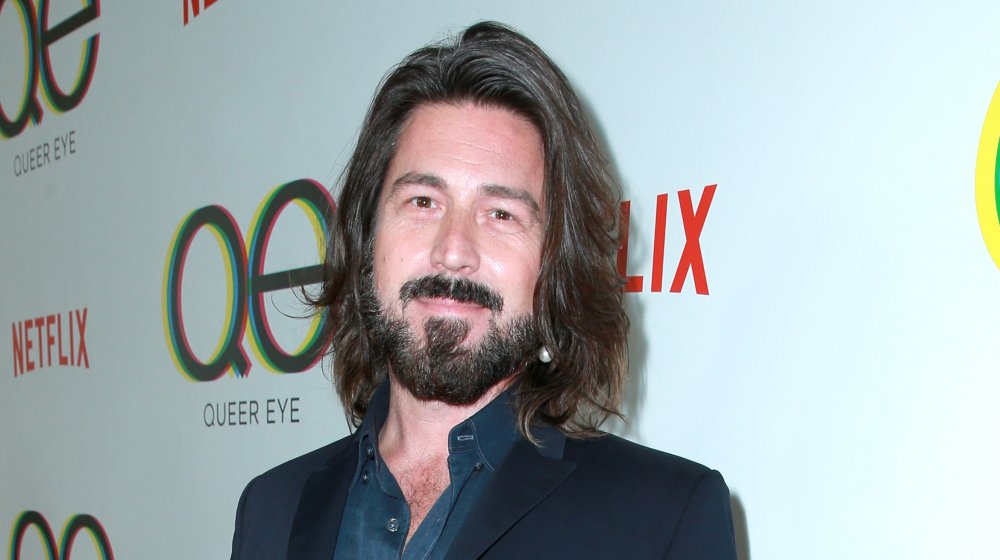Things You Forgot About The Early Days Of TLC
What things did you forget about the early days of TLC? The network is known for its outrageous programming, featuring larger-than-life personalities, as well as uncommon behaviors and conditions that have captivated audiences for decades. However, while TLC now features family-focused shows like Sister Wives and Doubling Down With the Derricos, the powerhouse network used to have programming that featured a different kind of television.
With former series like Trauma: Life in the ER, which covered the daily work of an extreme profession, and A Wedding Story, which gave a glimpse into regular people's big day, it's clear TLC has gone through a grand transformation. The network has consistently evolved its programming, but has still found ways to keep audiences engaged with its unique and sometimes controversial programming. From its days as an educational hub to the time TLC spent making over average Joes and Janes, here are some of the things viewers might not remember from the early days of TLC.
In its early days, TLC used to stand for The Learning Channel
TLC was home to a wildly different lineup of shows in its early days, something you might have forgotten. The network, which is now known for family-centric dramas and a slew of polygamy programming, was once actually a place for education-based content. In fact, TLC was originally named "The Learning Channel", giving the station its iconic acronym.
Before Honey Boo Boo found her way into our hearts, TLC was founded by the Department of Health, Education, and Welfare along with NASA in 1972, according to Real Clear Science. It was meant to have instructional programming in order to inform audiences on a wide variety of topics. TLC then transitioned into documentary programming eight years later, and it premiered shows like Amazing Space, an eight-part series that focused on different topics of the universe.
TLC continued to produce programming that educated audiences on space, the world, and even dinosaurs, before it ventured into reality-based programming in the mid-'90s. (via AOL).
Forensic Files used to be called Medical Detectives in the early days of TLC
Medical Detectives debuted on TLC in 1996; but the show, which revolves around detectives solving crimes, is better known by the name Forensic Files (via Business Insider). The series used both reenactments of crimes and forensic science in order to solve violent, high-profile true crimes.
The format of Forensic Files proved to be popular for TLC in its early days, with ratings that set the bar high for the true-crime documentary. Additionally, you might have forgotten that the series enjoyed a 14 season run on TLC, ending in 2011.
However, after a long hiatus, Forensic Files made its way back onto small screens in February 2020 as Forensic Files II. According to producers, the show's resurgence almost didn't happen after long-time host Peter Thomas passed away. Executive Producer Nancy Duffy spoke to Vulture about the journey to bring back the popular show. "There was no way we could ever find someone who sounds like Peter Thomas, nor would we want to," she explained. But eventually, Forensic Files II selected Emmy-nominated actor Bill Camp to fulfill the role, and brought the beloved crime docu-series back to life.
Sarah Palin's Alaska was "a point of no return" in the early days of TLC
TLC has had a wide variety of short-lived programming in its early years, with some shows not making it past one season. This was the case for former vice presidential candidate Sarah Palin, which you might have forgotten. Her show, which was aptly named Sarah Palin's Alaska, featured the Alaskan senator in her native environment and showcased her private family life.
The series aired in 2010 and only lasted eight episodes, thanks to its severely low ratings. Because of its dire performance, Sarah Palin's Alaska was said to be the turning point for TLC; after that, the network changed course, according to marketing expert Rachel Weingarten. "I don't think this is a point that [TLC] can turn back from," she explained in an interview with CNN.
While Sarah Palin's Alaska was canceled shortly after its debut, TLC changed its programming because of it. So in its way, it left a permanent mark on the network.
TLC used to have children's programming in its early days
In the early days of TLC, the network was dedicated to educational programming for both adults and children, which you might have forgotten. Before My 600-lb Life and Dr. Pimple Popper, TLC featured shows like Ready Set Learn and The Swamp Critters of Lost Lagoon that were meant for young kids.
These programs aired in the early '90s, starting with Ready Set Learn in 1992, which featured Paz the penguin. Aimed at preschoolers, Ready Set Learn morphed into a follow-up show featuring just Paz in 2003.
While TLC has long departed from its days airing kids' shows, they had a long line-up of diverse programming all the way through the mid-2000s; it included a live-action musical called Hi 5 in 2003, as well as an animated series called ToddWorld in 2004. According to a review from the Los Angeles Times, these series were a far cry from the programming that audiences are used to from TLC today. They explained that their early children's shows "are colorful, watchable and scrupulously created with the principles of child development firmly in mind."
Trauma: Life in the ER was one of TLC's successes in its early days
TLC's medical docu-reality series Trauma: Life in the ER debuted in 1997, and was one of the network's first ventures into the reality genre in its early days. The show depicted medical emergencies and the everyday lives of those working in emergency rooms across the country.
The Emmy-nominated show lasted seven seasons, and was the catalyst for a change in the network's audience demographic, according to TLC head of programming John Ford. "It skewed female, which really caught us by surprise," he explained in an interview with The Washington Post.
Ford went on to explain how Trauma: Life in the ER enabled TLC to understand "gender dynamics," and transformed the way the network viewed its own audience. Capitalizing on the popular fascination with the lives of real people, TLC began to introduce similar shows that followed real people in different situations. After that, reality-based shows like A Wedding Story and What Not to Wear were born, though you might have forgotten about those as well.
In its early days, TLC's Trading Spaces launched a home renovation frenzy
You might have forgotten that the home renovation craze on television started in TLC's early days with the popular show Trading Spaces, which debuted in 2000. The premise consisted of two sets of neighbors who switched houses, and had the ability to redesign one room in the house with the help of the Trading Spaces design team. The show was wildly popular and produced home renovation megastar Ty Pennington, who was one of the carpenters on the show.
Trading Spaces ran for 10 seasons and was the force behind TLC's boom in viewership and overall popularity, according to The Washington Post. However, the success didn't last long, as other networks started to create their own home makeover shows. Still, the success of Trading Spaces allowed TLC to venture into yet another genre of programming, according to TLC's general manager Amy Winter. "After the Trading Spaces heyday, we started evolving The Learning Channel concept into a live-and-learn kind of thing," she explained. She added that viewers preferred learning from everyday people rather than being "taught" in a formal educational setting.
TLC's tagline used to be 'life unscripted" in its early days
TLC's evolution is most evident in its transition from broadcasting learning programs in its early days to the reality-based, pop-culture sensations of today. The popular channel's slogan also indicates its shift, as it has changed dramatically since the early '90s; TLC left The Learning Channel behind, and leaned into the ubiquitous "tender loving care" moniker.
TLC's rebranding also included a shift in its slogan, which you may have forgotten used to be "life unscripted" in the early 2000s. With its new image, the network adopted the catchphrase "Everyone needs a little TLC" as their slogan, according to general manager Nancy Daniels. "'Everyone needs a little TLC' speaks to our mission of bringing viewers the content and experiences that resonate with their lives," she explained in an interview with The Hollywood Reporter.
Daniels also reassured viewers that the core of the network would remain the same. "TLC's brand promise hasn't changed: sharing remarkably relatable real-life stories without judgment," she continued.
TLC featured shows like Freaky Eaters in its early days
Freaky Eaters was one of TLC's experiments in its early days in documenting the strange habits of real people. The show, which received a fair amount of criticism, first aired on the network in 2010 and only lasted for two seasons. That's why you might have forgotten about it altogether!
Freaky Eaters followed individuals who had unusual eating habits, such as being addicted to eating pizza or consuming raw meat. And while the series had a nutritionist and psychologist involved in order to rehabilitate the eaters back to a normal diet, it was also criticized for exploiting and even exaggerating the conditions the show portrayed (via Pop Matters).
In an interview with Entertainment Weekly, the show's psychotherapist, Mike Dow, addressed the question critics of the show asked: are the people who appear on Freaky Eaters really addicted to their eating habits? "Some of those people are not technically addicts in the narrow definition of the word, but I think almost every single other patient we've had on the show really is a food addict," he revealed.
Jon & Kate Plus 8 started the family-centric revolution in TLC's early days
TLC ventured wholeheartedly into family-centered programming after its mega-hit Jon & Kate Plus 8 captivated audiences in its early days. The show revolved around Jon and Kate Gosselin as they raised their eight kids, which included twins and sextuplets.
Jon & Kate Plus 8 debuted in 2007, which you might have forgotten, but the show was renamed Kate Plus 8 after the Gosselin's chaotic divorce and subsequent custody battle.
While Jon & Kate Plus 8 ran for ten years before being canceled, the program brought on yet another change of identity for TLC. After the Gosselins, TLC broadcast a slew of family-centric series, which become an insanely popular genre of reality show for the network. According to The Washington Post, TLC rolled out shows like 19 Kids and Counting and Sister Wives in their wake, which followed large families' day-to-day lives, including their hardships and private moments. This change cemented the network's shift into airing unusual family dynamics that viewers weren't used to seeing, and it's been a staple format at the network since.
Before 90 Day Fiance, there was A Wedding Story in TLC's early days
TLC's programming in its early days included A Wedding Story, a popular docu-reality show that gave audiences an inside look at the days leading up to a couple's wedding. The show debuted in 1996, and was a staple at the network for 25 seasons. Viewers watched couples from all different backgrounds and religions as they planned their ceremonies and receptions, though you might have forgotten about that now.
A Wedding Story scored high ratings throughout its unprecedented run, and was the catalyst to more story-based programming like A Baby Story, A Dating Story, and A Makeover Story. This format was TLC's attempt to engage with a younger audience and tell the story of average people via traditional storytelling, according to TLC vice president Roger Marmet. "The strategy behind everything being a 'story' was to link together programming with a first-person account of their experiences," he told the Los Angeles Times. "It's just really a day in the life and a really special day in the life of these people."
In its early days, TLC's Clean Sweep was the original Hoarders
Before viewers got the chance to look inside the homes of hoarders, and before Marie Kondo took over Netflix with a show that was dedicated to cleaning up everyone's homes, there was Clean Sweep. The program aired on TLC in its early days from 2003 to 2005, with hosts Peter Walsh and Tava Smiley at the helm. The pair focused on cleaning out households that had held on to decades worth of junk, though you might have forgotten about them by now.
Peter Walsh was the show's professional organizer, taking on the cluttered homes of couples, and helping them create a newly-cleaned space in their homes. Viewers watched as he acted as life coach/organizer in order to get rid of mountains of clothes or unused baby toys in a keep, sell, toss format (via Slate).
Although Clean Sweep ended in 2005, Walsh went on to have a steady career with Oprah Winfrey on OWN on the show Extreme Clutter. He also maintains his career as a professional organizer.
TLC's A Model Life was a response to America's Next Top Model in its early days
TLC was a trailblazer in its early days, with shows that featured home makeovers and family-centric drama. However, after the debut of America's Next Top Model, the network came up with its own response to the show in the form of A Model Life. According to The New York Times, it debuted in 2007, and was hosted by former supermodel Petra Němcová, who handpicked the contestants for the program.
In case you forgot, A Model Life followed a handful of aspiring models hoping to make in the competitive modeling world; though it was less of a competition show than America's Next Top Model, and more of a chance for models to get mentored by Němcová (and a possibility to obtain a modeling contract with NEXT modeling agency at the end of filming).
Unlike other TLC hits, A Model Life only ran for one season, despite relatively high ratings. The series was ultimately canceled with little word on why, but it did produce one winner: Lucia Dvorská, who went on to appear in issues of Sports Illustrated.
In its early days, Starter Wives Confidential was a Blip in TLC history
In its early days, TLC premiered the controversial reality show Starter Wives Confidential, which featured women who were married to famous husbands before they became celebrities. The program only ran for three episodes in 2013 before being pulled off the air under chaotic circumstances, which is why you probably forgot about it.
With a cast made up of 50 Cent's ex-wife Shanequa Tompkins and DJ Funkmaster Flex's ex-wife Monica Joseph-Taylor, the show was plagued with legal woes from the beginning. According to HuffPost, Tompkins wasn't allowed to film the show due to legal contracts she had with her ex. Joseph-Taylor explained her side of the story, saying there was some force putting pressure on the network to have the show axed.
Fast forward to a series of tweets from 50 Cent himself, who took the blame for the show being taken off the air. "I want to apologize to the cast of Starter Wives for having the show pulled off the network," he wrote. "I sincerely hope you find work."
In its early days, TLC Had a makeover show called 10 Years Younger
TLC is no stranger to makeover shows, and that includes 10 Years Younger in its early days. The show premiered in 2004, and was known for the scary glass box that contestants would stand in while people commented on the worst parts of their look. Originally hosted by Mark Montano, those duties switched to popular Queer Eye cast member Kyan Douglas. Contestants underwent a makeover process that included dental work, a haircut, a new wardrobe, and makeup advice.
While a makeover can transform people's lives, some former contestants have unpleasant memories of the series. According to the Daily Mail, former makeover hopeful Julie Davis regrets her time on the show. "If you watch the closing scenes of the program, I'm standing there smiling," she explained. "But that was far from the reality of the situation."
Davis also opened up about the dental veneers she received from the 10 Years Younger dentist. "At the end of filming, they made me pose with a cocktail and I couldn't even sip it because my teeth were shooting with pain," she revealed. The show ultimately only lasted four seasons ending in 2009.
